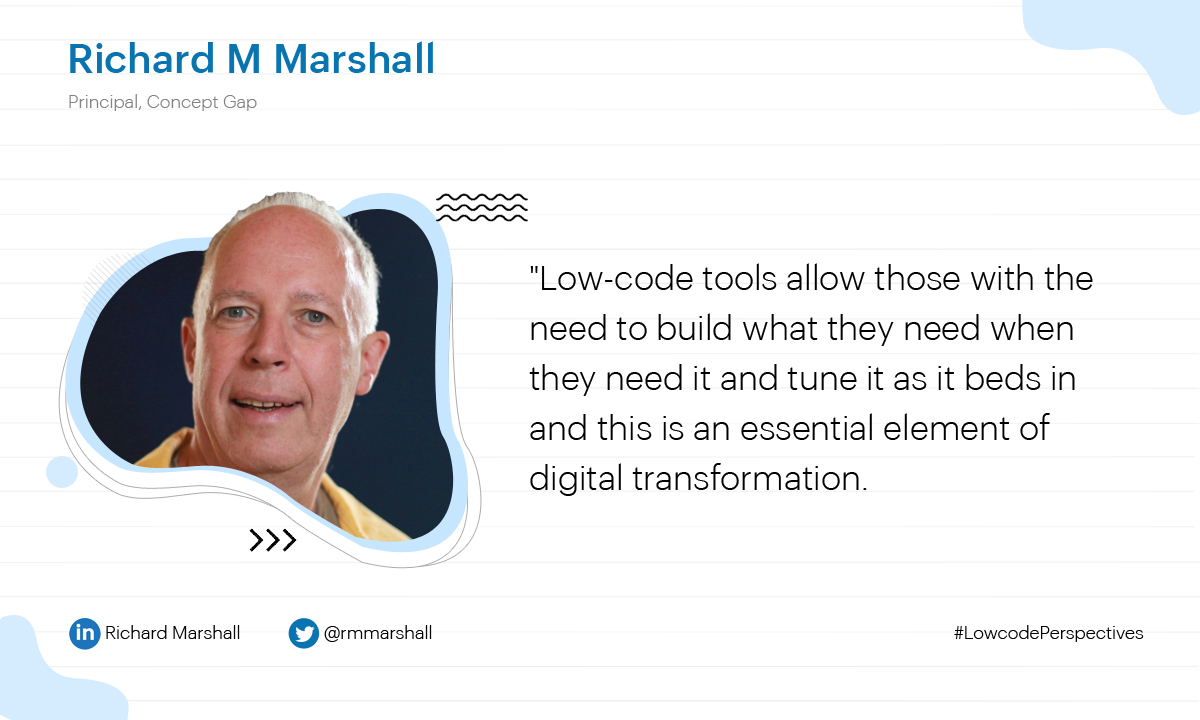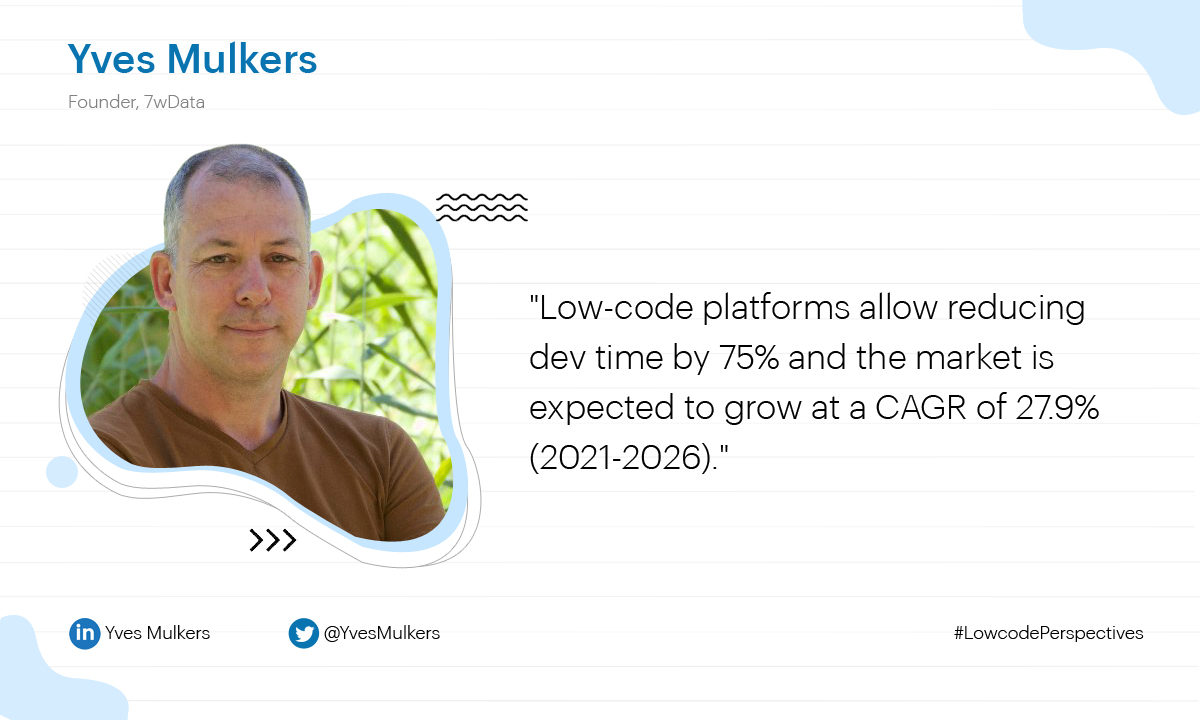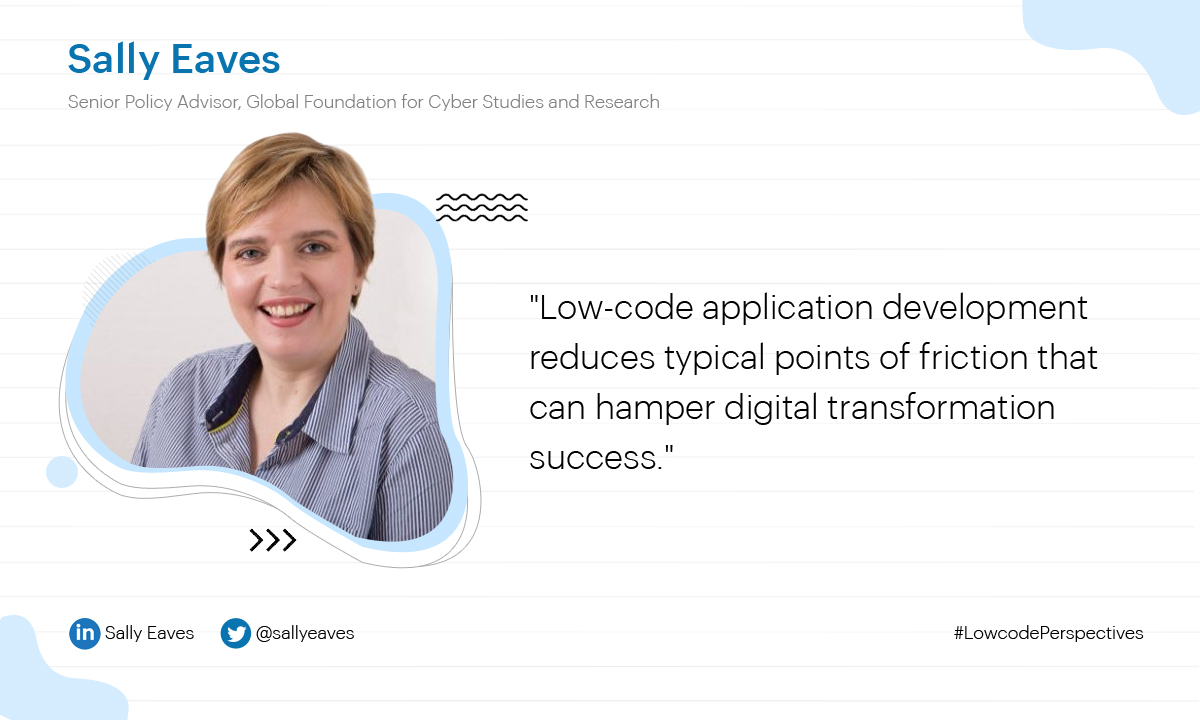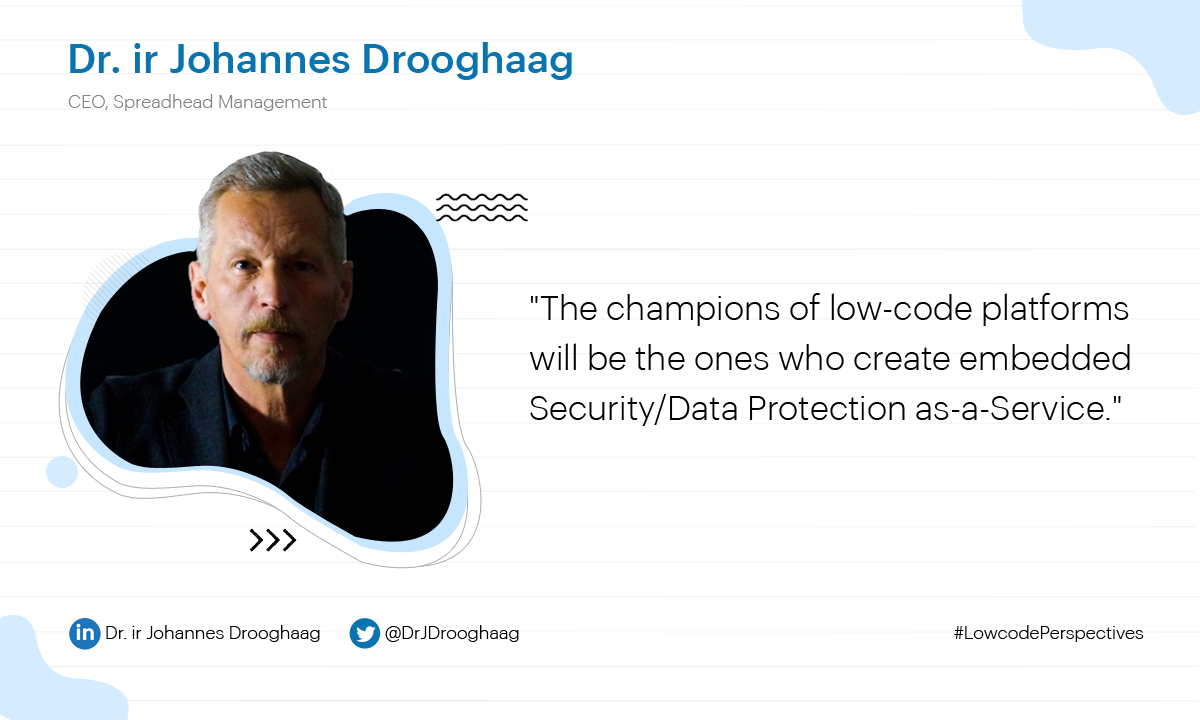- HOME
- Know Your Tech
- Low-code application development as a part of enterprise digital transformation strategy, ft. Tech Gurus!
Low-code application development as a part of enterprise digital transformation strategy, ft. Tech Gurus!
- Last Updated : April 20, 2023
- 1.5K Views
- 9 Min Read
May 2021 - 100.
September 2021 - 99.
October 2021 - 94.
These are the search scores for the term "digital transformation" as per Google Trends— going all the way back to 2004—indicating that the demand for the term as a search entity is at an all-time high. And that shouldn't be a surprise to anyone!
Driving business forward—by leaning on technology (read apps) that facilitates automation, optimization, and collaboration—has been the central theme in the organizational survival story post-2020.
However, this is all still jumbled chaos for the average person to find their way around, in terms of the broader theme of digital transformation and application development.
To get some perspective, we asked some of the experts in the space of digital transformation on their thoughts about the topic, and specifically the role of low-code platforms in organizational digital strategies.
The result? We got 10 stalwarts with a combined experience of 282 years in the industry to give their two cents. Chances are that more than a few from this list would have either directly experienced or been impacted by the major technology shifts in the last 35 years.
Below are some excerpts from the responses we got.

Richard M Marshall is the current principal at Concept Gap, an entrepreneur, a former Gartner analyst, an author, a virtual CTO, and someone with over 35 years of experience in the industry.
Below are his thoughts on:
Digital transformation and traditional application development
While the goals of digital transformation are usually well known, the actual journey is poorly understood. Success often depends on being able to experiment with different options, something that is too slow and too expensive with conventional development. All too often traditional development delivers apps after the business need has gone, wasting time and effort. At best they underdeliver functionally and overdeliver in caution.
Low-code tools for application development
Low-code tools allow those with the need and the best understanding of the problem to build what they need when they need it, and tune it as it beds in. This responsiveness is an essential element of digital transformation, which is at best an uncertain journey. IT teams should prioritize a solid, secure foundation of services delivered via APIs accessible to business teams using low-code tools to create front ends and capture business logic. IT teams need to educate business developers on governance, rather than imposing limitations.
Successful adoption of low-code strategy
As with any initiative, education is the first and most important step. Ensure that the IT organisation understands that the strategy is not about taking over their domain, nor is it about putting critical business information resources at risk. The domain experts, in turn, need some education about how their apps will fit into the IT framework and the basics of information governance. A strategy also needs some form of internal marketing for apps, as well as routes for both growing team apps to company-wide use with associated support costs, and paths for retiring apps after their utility has ended. Collaboration and well-defined boundaries are essential.
Organizational culture being pivotal to successful implementation
Cultures that try and forbid new approaches always end up pushing them underground, causing business users to adopt risky approaches that work around IT and potentially put data security and integrity at risk. IT refusing to open up to new ways of building apps also puts businesses at risk by slowing down digital transformation and reducing responsiveness to market and client needs. A solid framework of IT-provided services and an agreed low-code platform that provides both guard rails for novice developers and growth paths for popular apps, will eliminate the uncontrolled spread of dangerous apps while building a truly digital app portfolio.

Helen Yu is a Fortune 500 advisor, global top 20 thought leader in digital transformation, founder and CEO of Tigon Advisory Corp, and Senior Vice President of Services at Britecore. She is passionate about the voice of the customer to deliver game-changing digital transformations—and below is her take on:
Digital transformation as a new way of thinking and the role of low-code in enabling it
Elevating your organization and preparing for the future requires a new way of thinking. And at its core, digital transformation might also be defined in exactly that way: a new way of thinking. Low-code as a social and technological movement, accelerates digital activation, fosters development iteration with agility, optimizes mobile experience, delivers DevOps support, and ensures the reliability, performance, and security of the experience.

Yves Mulkers is a data architect who specializes in all things data. He is a top 10 influencer in digital transformation and founder of 7wData. Below is his take on:
How business software is critical to business agility, which is increasing the demand for low-code platforms
In order to quickly adapt, stay competitive, and reduce time to market, businesses need software to be able to handle tasks without the need for extensive and time-consuming coding from a developer. Low-code platforms allow reducing dev time by 75%, and the market is expected to grow at a CAGR of 27.9% (2021-2026). Businesses better adapt to the digital age right now, before they fall behind.

Cyril Coste is an innovation evangelist, CxO digital transformation advisor, and founder and chief digital officer with Digital, and he highlighted the:
Perks of low-code platforms in addressing digital transformation challenges
Low-code platforms allow users to quickly assemble an application from a library of prebuilt components, without writing any code. Non-experts can use a well-designed low-code platform in a business domain to rapidly build applications for common tasks, with little or no programming. Another great benefit from these applications is that they are often easier to maintain and support than custom code, thanks to the use of standard components. Other expected low-code benefits include reduced time to market for new products, reduced maintenance costs, and improved user experience. Low-code applications are perfectly adequate to address digital transformation challenges. They empower the user by giving them a more accessible and user-friendly way to be productive, as users can respond to changes quickly and without any extra resources.

Professor Sally Eaves is an international authority on digital transformation by virtue of her experience being a CTO, CEO, and strategic advisor to large enterprises. She is also the inaugural recipient of the Frontier Technology and Social Impact Award, presented at the United Nations and Founder of Tech For Good enterprise Aspirational Futures. She spoke about:
How low-code development can reduce friction in the digital transformation journey by bringing citizen developers into the equation
Low-code application development reduces typical points of friction that can hamper digital transformation success, notably by reducing cost and complexity. Specific benefits include negating the requirement for high-level specific skill sets at a time of heightened workforce skill gaps/shortages, whilst increasing responsiveness to needs, faster time to market, and ultimately customer experience, meeting their evolving requirements more quickly. Low-code also affords the opportunity for citizen developers to become champions of change in their organisation’s development, beyond traditional technology-facing or high-programming roles. In combination, this equates to next-level, shared-value application development!

Ronald Van Loon, principal analyst and CEO of Intelligent World, and one of the leading global authority on digital transformation for enterprises touched upon the:
Ability of low-code platforms to aid market responsiveness
Low-code improves the speed of application development and delivery, so businesses can rapidly respond to dynamic changing market conditions. Also, low-code brings levels of flexibility towards business units who are non-developers, enhances integration of applications with business systems, and supports scalability of applications across the enterprise.

Bill Mew is an opinion leader with over three decades of industry experience and a campaigner for striking the right balance between meaningful protection (privacy, cybersecurity, and digital ethics) and the maximization of economic and social value (cloud, digital transformation, fintech, and govtech). He is the founder and owner of Mew Era Consulting and Crisis Team, a digital era crisis management team. He spoke about:
The most overlooked benefit of low-code application development—code maintenance—which makes a huge difference for enterprise IT teams
One of the most overlooked benefits of low-code is code maintenance. You typically write code once, rewrite it a few times, and then need to maintain it forever. Code maintenance can therefore be easily your greatest overhead. If a new vulnerability is discovered, then you need to go back through all your code to see if it occurs anywhere—which can be almost impossible.
With low-code you simply need to update the elements or their relationships, which can be done easily and at scale. As Steve Jobs explained back in 1997: "The way you get programmer productivity is not by increasing the lines of code per programmer per day. That doesn't work. The way you get programmer productivity is by eliminating the lines of code you have to write. The line of code that is the fastest to write, that never breaks, that doesn't need maintenance is the line of code you never had to write. The goal is to eliminate 80% of your code that you have to write for your app!" This is as applicable to coding and to code maintenance now as it ever was.

Dr. ir Johannes Drooghaag is the CEO of Spearhead Management and strategic advisor to enterprises. He has over three decades of experience in technology and is a consultant, speaker, trainer, coach, author, and social media & digital marketing service provider. He gave his perspective on:
Building business champions for low-code success
The strength and weakness of low-code are embedded in the lack of a need for technical knowledge to create technical solutions. Enabling business champions to become hands-on solution builders also shifts responsibilities for security and data protection towards the ‘unknowing’. The champions of low-code platforms will be the ones who create embedded Security/Data Protection-as-a-Service.

Jeffrey Mann, contributing analyst with The Analyst Syndicate, and ex-Gartner research vice president, added to the challenges noted by Dr. ir Johannes Drooghaag by speaking about:
IT reluctance on deploying low-code strategy for application development, and how to overcome it
One of the main challenges I see organizations facing is that IT is extremely reticent about allowing low-code development. They do not trust their users, or have had bad experiences in the past. Most IT managers can tell horror stories about monster Excel sheets that run vital business processes, or a clever user who built something in their spare time using Microsoft Access or Lotus Notes and then expected IT to take it over and support it once it got to be too big. After going through this once, they don't want to do it again.
Certainly, imposing sensible limits should be part of a low-code strategy. A technique I often recommend is to set up guard rails and tripwires to make it clear what end users can do and what kind of support they can expect. A guard rail keeps users from getting into too much trouble. For example, they should know that they cannot do anything that moves confidential or restricted data beyond the enterprise's control (so no downloading last year's financial data to a random server for analysis). A tripwire indicates when they should seek additional help or approval. For example, if a process takes more than 20 steps or involves more than 5 people or three departments, they should talk with IT before deploying it.

Harry Kimpel, senior solution engineer at Commercetools, with over 20 years of technology expertise, rounded out the perspective by talking about the:
Right approach to implementing a low-code strategy
If done right, the benefits of a low-code platform for an organization can be huge. They can be more agile, business-oriented, and flexible in their implementation. In my experience, a low-code strategy should include both a top-down and a bottom-up approach. Top-down because the business needs to provide their requirements and objectives to fit their needs. However, also the technical, regulatory, and compliance requirements should be met. Businesses do not need yet another silo.
So, how does one test the waters before jumping in? Finding the right platform based on your needs is critical.
Get in touch with our Zoho Creator digital experts, give us your business problem, and get a solution in the form of afree proof of concept.
 Tribin
TribinAt work, a product marketer passionate about narrating technology stories that can help organizations make value-driven decisions. Outside of it, a cat-parent who believes that everyone should observe these fabulous beings to learn a thing or two about patience, excitement, and love.



